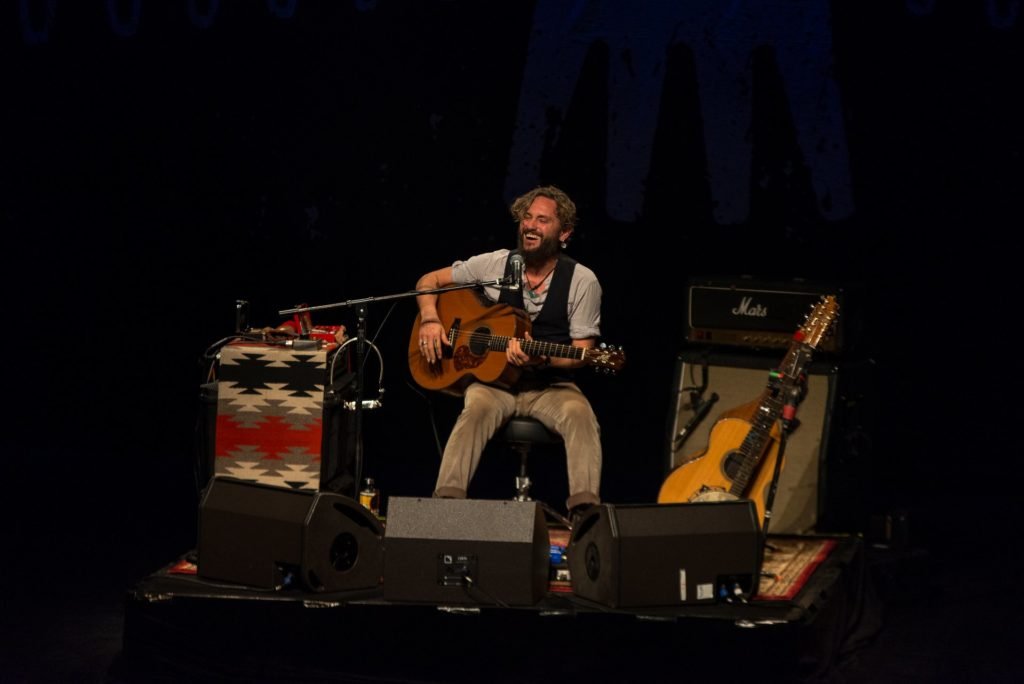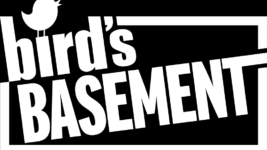News
7 Oct 2021
An Evening With John Butler

Subscribe to CX E-News
Proudly independent Australian roots music legend John Butler has had a more mobile year than most Australian musicians. Lucky enough to pull of a national tour through May and June, his guitar-intense solo set, after support from partner Mama Kin and band, went from a whisper to a roar across NSW, QLD and his home state of WA.
Very sensibly against a background of random lockdowns, sound engineers Tim Millikan and James Newhouse separated responsibilities for the Eastern states and WA, with Tim mixing on house rigs from Sydney to Toowoomba in May, and James mixing across WA in June. With many of the smaller, more remote WA venues needing production brought in, James jumped at the chance to try out a PA system that was not only portable, but highly recommended.
“My old friend Christian Peterson, who had a Head of Sound position with Cirque Du Soleil and is now with CMI Music & Audio, said he had an idea,” relates James. “CMI are the Australian distributor for Adamson, and I’d been keen to try one of their PAs for a while, especially after Christian kept telling me how great they were. He had a system in WA that was the perfect size for the venues we were about to tour, so I said, ‘let’s do it.’ Quite a few of the staff at the venues we were heading to were keen to hear it as well, so it was a win-win.”
The system Christian provided included two Adamson CS10p powered two-way 10”s for main left-right, two CS7p powered two-way 7”s for fill, and two CS119 single 19” powered subs. Having toured most of the venues before, including in Albany, Kalgoorlie, and Esperance, James knew the rooms and what to expect.
“John’s solo show is very dynamic,” explains James. “You need headroom, clarity and detail. It’s everything from quiet acoustic instruments to a wall of distorted Marshall heads and massive bottom end. Some of the tour, including the Perth dates, used house PAs, but had I known how the Adamson would perform, I would have used them on the whole tour. In the end, we used the Adamson rig in Esperance, Albany, and Kalgoorlie. In Albany, I was going to use the house line array, but we fired up the Adamson and it left it for dead. Adamson blew my mind on this run.”
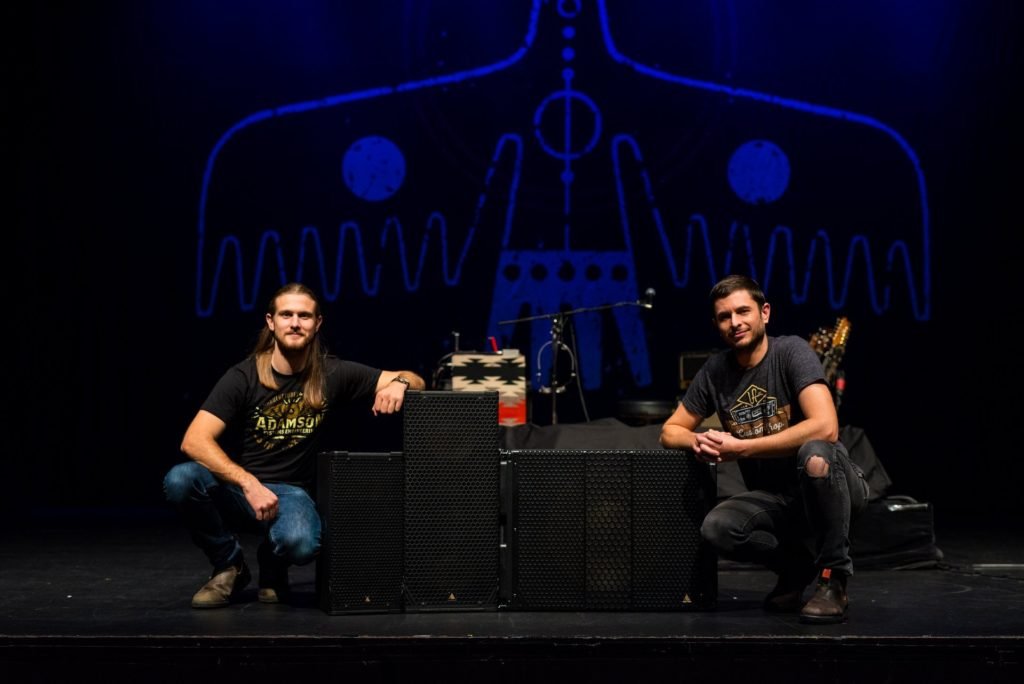
Touring a small show to remote venues meant a couple of techs, John, and a van. Space and time were at a premium. “This Adamson rig was such a tiny system!” chuckles James. “I can pick up a CS10p with one hand. When we got to a venue, load in was 20 minutes and we’d be ready to go. The coverage, bottom end, and clarity that we got out of these small boxes was very cool. The subs, for example, are single 19s. I would have been underwhelmed if I’d saw that in a venue spec. But the bottom end was all there. John had an octave pedal on some things, so I needed the extension. I never got anywhere near limiting, and I always felt like I had room to push up the master.”
A quick load in leads to a quick load out, merciful at the end of long day and longer drive across the vastness of WA. “20 minutes and the whole PA was in the van,” reports James. “The three of us had the whole show packed in 40 minutes, including the backdrop, Marshall heads, and guitars. Honestly, most of the van was John’s gear.”
James has worked with John on and off for years and has a unique insight into how his live sets function. “John’s show is a delicate balance between his instruments, the room, and the PA,” observes James. “His guitars react to the PA, his amp, and his foldback, and everything has to become one with the room. If the room and the PA aren’t responding in balance, the guitars won’t be stable. When you’re dealing with high gain guitars, as soon as something is not balanced, you get guitar feedback, or instability when doing loops. When John’s using his guitar percussively to create loops, you want the low end to be really defined. With the Adamson PA, the guitars were stable every night. Whatever comes off the back of the Adamsons is good, as I had no issues tuning between the guitars and the PA. After the last show, I was talking to John about how well the Adamsons perform for such small boxes and he couldn’t believe it; he thought we’d been using the big house systems at each venue.”
Feeding the PA was a Midas Pro 1 mixing console. “There’s a fair bit going on considering it’s just one guy who’s making all the noise,” says James. “I wanted a console that can be easily taken into a theatre that sounds good and has a nice, quick workflow. We had five lines coming into the desk, including from a rack mounted Midas XL48, which is eight channels of preamps that blend John’s guitar pickups. He uses the EQ on those pres to balance his guitars, then it comes to me. I split some of the inputs into different channels for parallel processing and such, so I’ve ended up with 10 channels in total.”
John chooses to sing through his reliable Shure Beta58, while James mic’d John’s guitar amp with a Josephson e22s side-address cardioid condenser and put a trusty Shure SM57 on his Marshall cab. “I hadn’t taken the Josephson out on the road before,” muses James. “It was designed in California for Steve Albini, and it’s basically a KM84 with a pad and side address. It’s incredible at high SPL, and it’s become my go-to mic to such an extent that I don’t think I’ll use anything else now. It captures all the detail while being very dynamic. John’s show is all about dealing with dynamic range, from quiet acoustic moments to a Marshall JCM8000 with a lot of power. John uses a volume pedal on his guitars so they can go from a whisper to a screaming jet.”
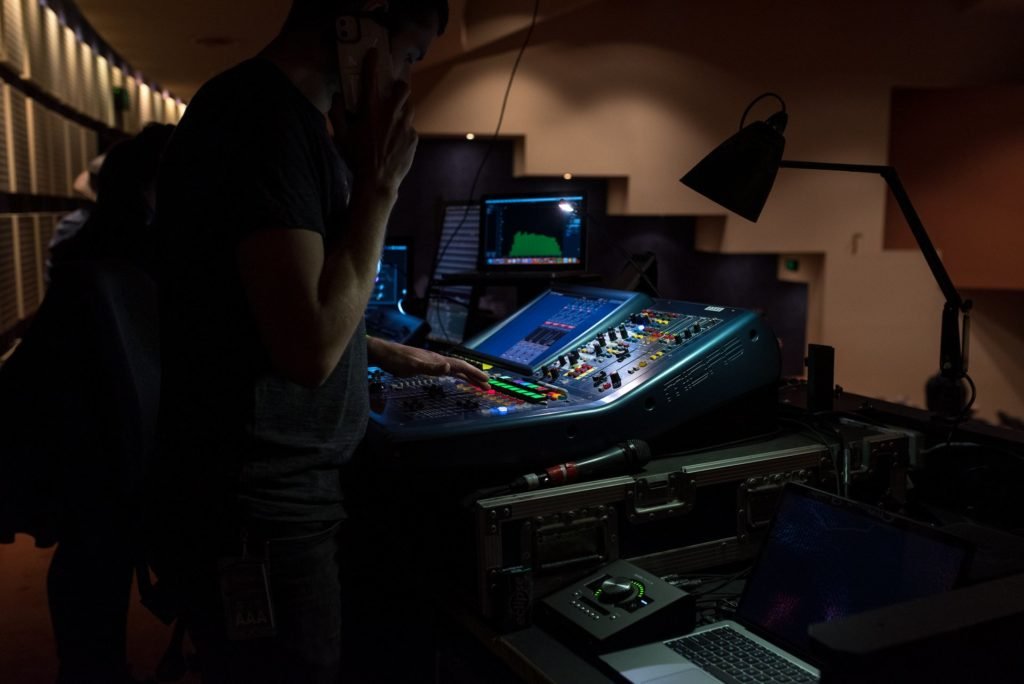
James on the Pro 1 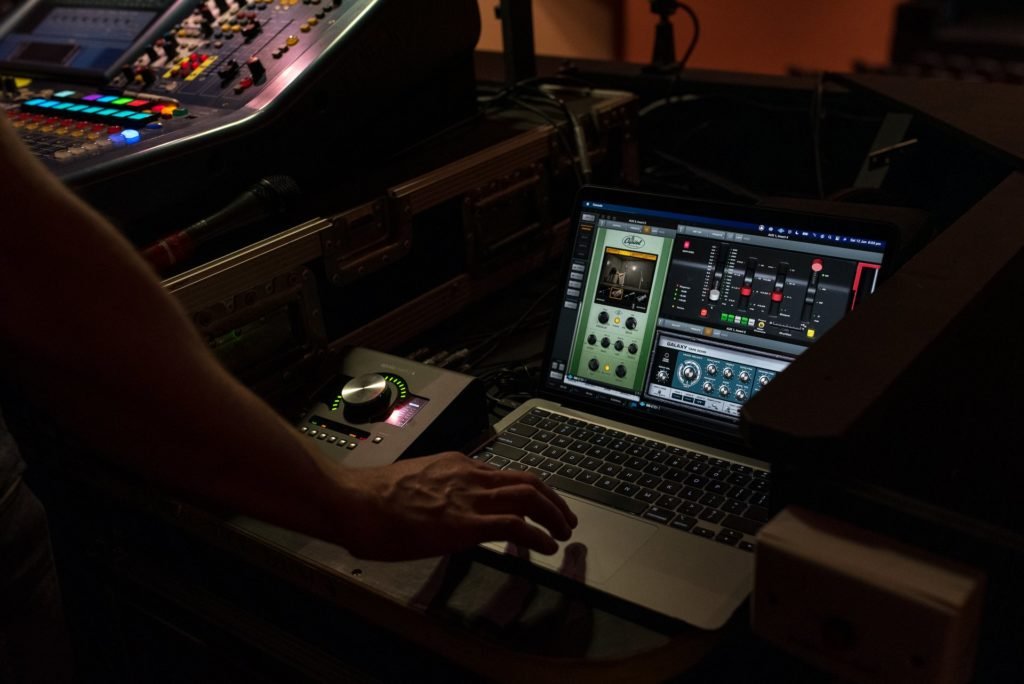
UAD Effects
Augmenting the processing in the console, James decided to try out a UAD Apollo Twin audio interface in a live scenario. “Studio engineering is my day job,” confesses James. “I changed over to using UAD processing three years ago, and it was the best thing I ever did in terms of studio gear. I had been searching for a sound and feel. I like touching things like 1176s; there’s something about how they react. I found when I got a UAD interface and all its processing, I had the same world at my fingertips. Three weeks later I sold my console and tape machines. Now I just pull up emulations of analog classics that sound great, and they respond in the same way.”
James employed the Apollo Twin (co-incidentally, also distributed in Australia by CMI Music & Audio) mainly for extra reverbs. “I’d been using them in the studio, and wanted to try them live,” he continues. “The Apollo took two independent mono ins from the console and sent back a combined stereo return. The effects sound awesome and beautifully three dimensional. I used their Space Echo emulator, the Capitol Records Chamber Reverb, EMT 140 plate reverb, and EMT 250 digital reverb. They’re simple yet detailed reverbs that work well with John.”
After standing ovations all-round from audiences thrilled to experience live music again, James has experienced a paradigm shift in what a small touring PA can deliver. “The big names in PA manufacturing have been all about line arrays for a while, but it’s about picking the right box for the scenario,” he observes. “Point source is accurate. You know exactly where the sound is going. In venues it can give you the ability to be precise. For these 300 to 500 pax rooms on John’s tour, there’s some great options, including Adamson’s. And they’re so small!”
Subscribe
Published monthly since 1991, our famous AV industry magazine is free for download or pay for print. Subscribers also receive CX News, our free weekly email with the latest industry news and jobs.


